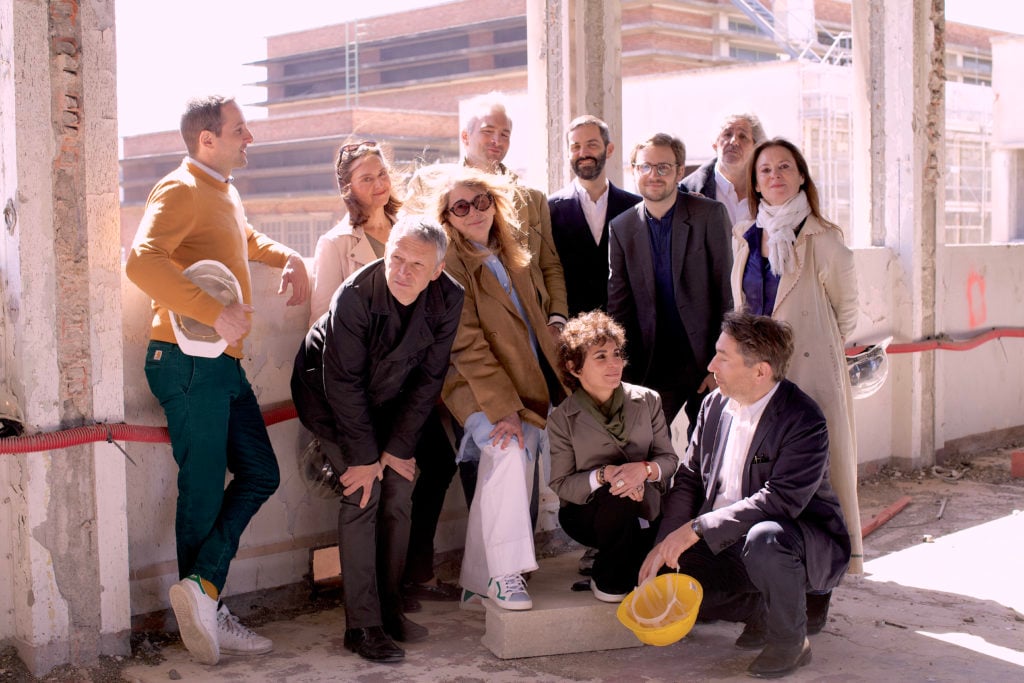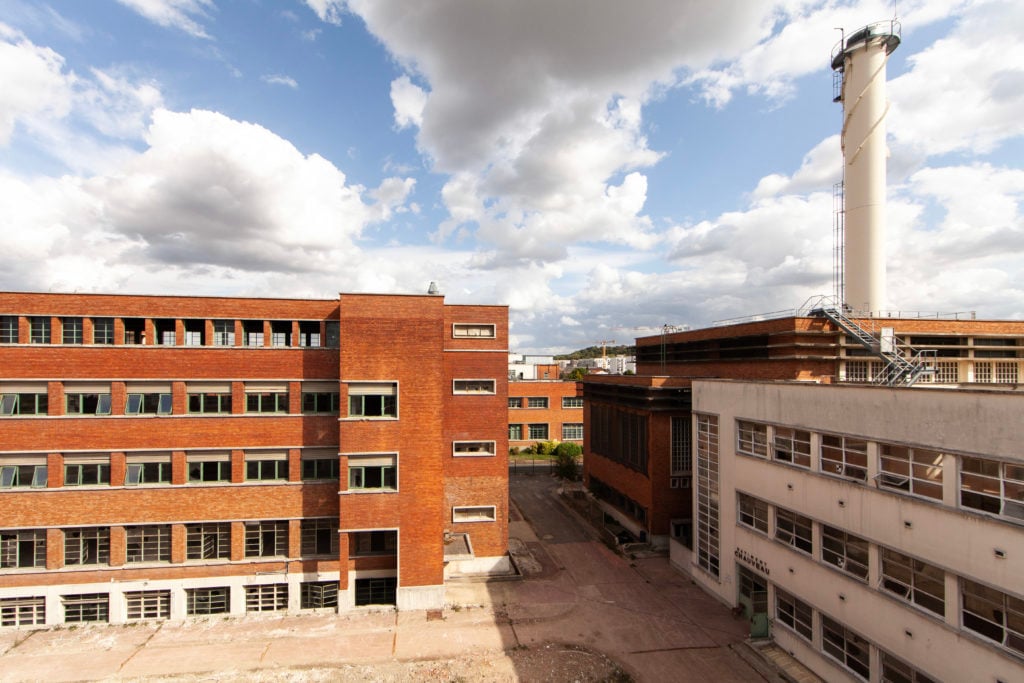Art Guides
An Enterprising Group of Paris Dealers Are Teaming Up With Non-Profits to Expand Into the City’s Suburbs. But Will Visitors Come?
The developers of the project, called Komunuma, hope to draw new audiences to their galleries.

The developers of the project, called Komunuma, hope to draw new audiences to their galleries.

Hili Perlson

A group of eight Parisian galleries and institutions are inaugurating a new complex for arts and culture this fall under the name Komunuma (Esperanto for “community” or “commune”).
But the new hub, set to open during the FIAC art fair in mid-October, won’t be in any of the Parisian neighborhoods that saw an influx of young dealers in recent years, such as Belleville or the streets around Les Halles, now attractive thanks to the planned opening of the Pinault Collection at Bourse de Commerce next year.
Instead, galleries Jocelyn Wolff, Imane Farès, Galerie Sator, Air de Paris, and In Situ Fabienne Leclerc are setting up shop in a former manufacturing plant in the borough of Romainville, a 15-minute metro ride outside city limits.
In addition, the longstanding artists’ association Jeune Création and the hotly anticipated new Paris branch of France’s national public collections (FRAC Île-de-France) will also relocate to the refurbished, 118,000 square foot complex in the coming months. The developer Groupe Fiminco’s own arts foundation, Fondation Fiminco, will run a residency program on site.
Because of its size, Komunuma can also offer artists larger-scale as well as outdoor exhibition opportunities—a rarity in Paris. But what prompted the move? A mix of opportunity and necessity, say Fabienne Leclerc and Vincent Sator, representing the group of gallerists.

The organizers of Komunuma, pictured here, hope to draw a diverse audience. Copyright and courtesy: Fondation Fiminco. Photo: Axelle Poisson.
“Parisian mid-sized galleries are not exempt from the pressure [of closures] as attractive spaces are more and more difficult to find,” they say. “Some of us had the experience of running spaces close together on the rue Louise Weiss in the 1990s and enjoyed it a lot.”
A chance encounter at FIAC four years ago between Leclerc and Gerald Azancot, an old friend and real estate developer, led to the opportunity to establish a shared gallery complex at the Romainville site. While Leclerc and Air de Paris are relocating completely, other dealers will keep their central Paris spaces open, at least for now.
Unlike other shared spaces where galleries only synchronize their openings and perhaps split some costs, Komunuma has the potential, despite its decentralized location, to draw an audience beyond habitual gallery-goers thanks to the public institutions on site. “For the first time in France, public and private activities will collaborate,” Leclerc and Sator say, adding that they would occasionally open on Sundays to accommodate new audiences.
But ultimately, it is the galleries’ responsibility to generate footfall. “We believe that an interest in what is new, the different identities of our respective programs, and the quality of our events will incite people to visit us regularly,” Leclerc and Sator say. “In terms of the gallery’s economy, we mostly make sales by appointment or during fairs.”

A view of the space that will become La Chaufferie at Komunuma in Romainville, outside Paris. Copyright and courtesy: Fondation Fiminco. Photo: Axelle Poisson.
For their inaugural exhibition, Air de Paris is holding a group show of their 40-artist roster including pieces by Trisha Donnelly, Liam Gillick, Michel Houellebecq, and Sturtevant, among others. Galerie Imane Farès will show Brussels-based, Congolese artist Sammy Baloji, while Galerie Sator has given carte blanche to Swiss artist Christian Gonzenbach. Galerie Jocelyn Wolff will hold a group exhibition centered on a new work by German artist Clemens von Wedemeyer,
FRAC Île-de-France director Xavier Franceschi, meanwhile, has big things in store for the new location, which is one of three for the institution across the Île-de-France region. (The other two are in Paris and Rentilly.) In Romainville, the aim is to make works in collection of 1,700 works more accessible.
“We are launching a totally unprecedented project called ‘Exit the Storage!’’’ he says. “It will provide the public with an opportunity to choose and earmark works from our database [that will then go on view]. Several museums have undertaken this type of project with the public—particularly involving drawing departments—but this is a real first on such a scale and involving an entire collection.”
Joachim Pflieger, director of the Fondation Fiminco, which was launched in 2017, says the aim is “to gather private, public, and non-profit actors from the art world” to join the cultural district. (Groupe Fiminco owns the land on which Komunuma and an adjacent shopping and leisure district are developed; the dealers and non-profits are on long-term leases.)
The private foundation’s 11-month residency program will launch in 2020 with 18 international artists. In addition to hosting open-studio events and talks, the foundation will also open La Chaufferie, offering an free exhibition program.
“One of the strengths of this project is quite simply that these various protagonists will be gathering in one location,” Franceschi says. “This coexistence will no doubt result in real synergy. There is a great deal to be done whether in terms of projects, meetings or activities aiming to draw our diverse publics closer.”